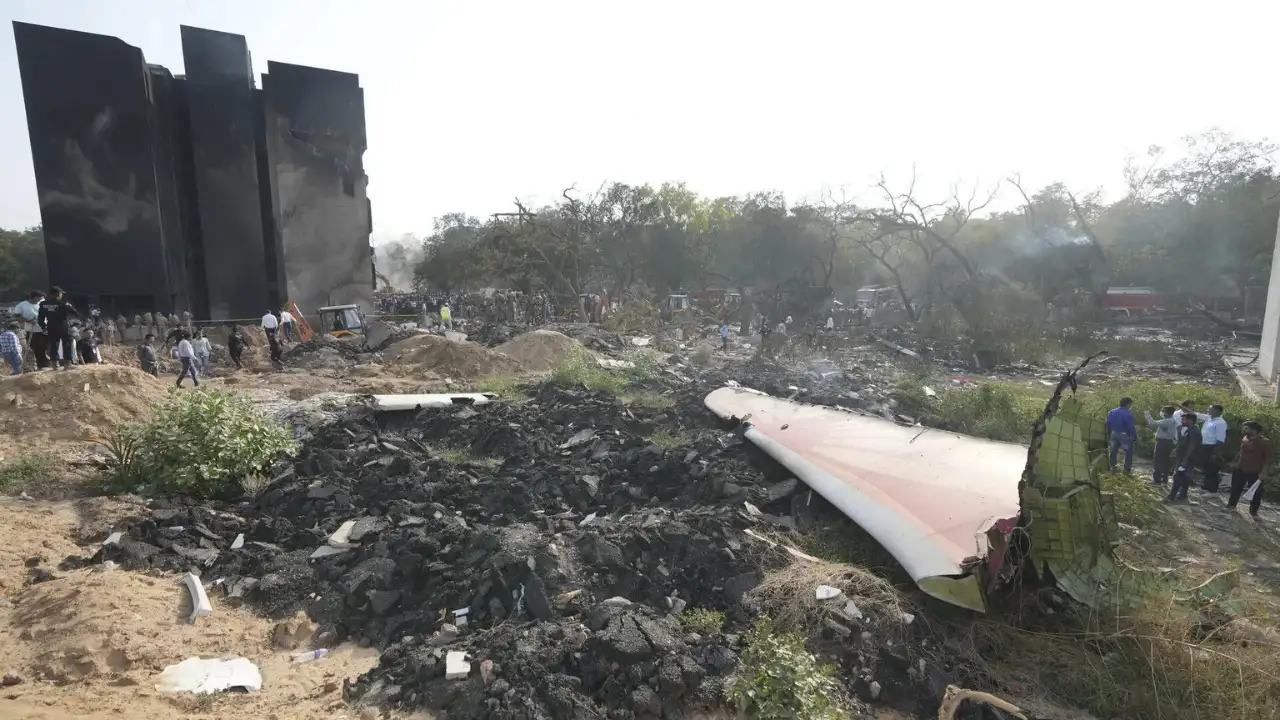Air India Plane Crash Involves Boeing’s Flagship 787 Dreamliner

In a devastating incident, an Air India Boeing 787-8 Dreamliner, operating flight AI 171, crashed shortly after takeoff from Ahmedabad on Thursday afternoon. This tragic event marks the first fatal accident involving a 787 Dreamliner aircraft. Following the crash, shares of Boeing plummeted by over 8% in pre-market trading, reflecting the significant impact of the incident on the aviation giant’s reputation and stock performance.
The Boeing 787 Dreamliner: A Brief Overview
The Boeing 787 Dreamliner is a state-of-the-art long-distance aircraft that has become a flagship model for Boeing since its introduction in 2009. The aircraft is available in three variants: the 787-8, which can carry 248 passengers over a distance of 13,530 kilometers; the 787-9, accommodating 296 passengers with a range of 14,010 kilometers; and the 787-10, which seats 330 passengers and covers 11,910 kilometers. Known for its fuel efficiency, the Dreamliner is constructed primarily from lightweight composite materials, allowing for significant weight reduction and fuel savings of up to 20% on long-haul flights compared to traditional aircraft.
The aircraft involved in the Ahmedabad crash was a 787-8 model, carrying 242 individuals, including passengers and crew. The Dreamliner was a groundbreaking advancement in aviation, being the first commercial airliner largely made from composite materials. It also pioneered the use of lithium-ion batteries, which provided advantages in weight and energy efficiency. However, in 2013, safety concerns regarding overheating batteries led to a temporary grounding of around 50 Dreamliners. Despite these challenges, airlines worldwide have ordered a total of 2,598 units, with 889 still awaiting delivery.
Boeing’s Response and Ongoing Challenges
In the wake of the crash, Boeing expressed its condolences and stated that it is in contact with Air India to provide support. The company emphasized its commitment to assisting in the investigation and addressing the needs of those affected by the incident. This crash adds to a series of challenges Boeing has faced in recent years, including production delays and quality control issues that have led to increased scrutiny from the Federal Aviation Administration (FAA).
Boeing has been working to enhance its production processes, receiving FAA approval in April 2023 to increase its monthly production capacity from five to seven aircraft. However, the company continues to face significant hurdles, particularly in its commercial performance. Despite receiving clearance from Chinese authorities, Boeing reported zero deliveries to China in May, a situation exacerbated by ongoing trade tensions between the United States and China.
The Broader Impact on Aviation
The crash of Air India’s Boeing 787-8 Dreamliner has raised concerns across the aviation industry, particularly regarding the safety and reliability of modern aircraft. As investigations into the incident unfold, airlines and manufacturers will be closely monitoring the situation to assess any potential implications for flight operations and regulatory measures.
This incident serves as a stark reminder of the inherent risks associated with air travel, even with advanced technology and safety features. The aviation community is likely to engage in discussions about enhancing safety protocols and ensuring that such tragedies do not recur in the future. As the investigation progresses, the focus will remain on understanding the causes of the crash and implementing necessary changes to improve aviation safety standards.
Observer Voice is the one stop site for National, International news, Sports, Editor’s Choice, Art/culture contents, Quotes and much more. We also cover historical contents. Historical contents includes World History, Indian History, and what happened today. The website also covers Entertainment across the India and World.

